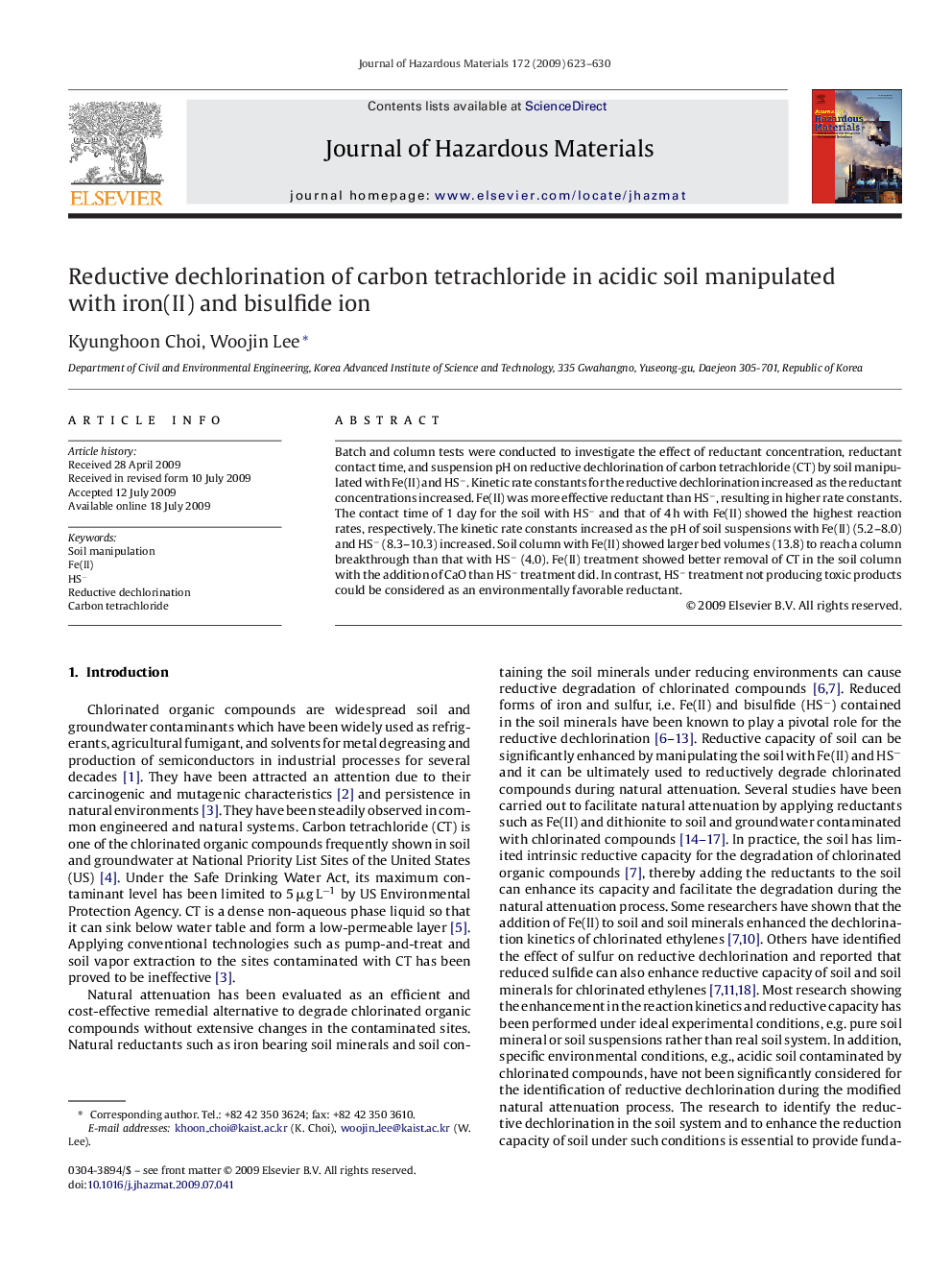| Article ID | Journal | Published Year | Pages | File Type |
|---|---|---|---|---|
| 580739 | Journal of Hazardous Materials | 2009 | 8 Pages |
Abstract
Batch and column tests were conducted to investigate the effect of reductant concentration, reductant contact time, and suspension pH on reductive dechlorination of carbon tetrachloride (CT) by soil manipulated with Fe(II) and HSâ. Kinetic rate constants for the reductive dechlorination increased as the reductant concentrations increased. Fe(II) was more effective reductant than HSâ, resulting in higher rate constants. The contact time of 1 day for the soil with HSâ and that of 4Â h with Fe(II) showed the highest reaction rates, respectively. The kinetic rate constants increased as the pH of soil suspensions with Fe(II) (5.2-8.0) and HSâ (8.3-10.3) increased. Soil column with Fe(II) showed larger bed volumes (13.8) to reach a column breakthrough than that with HSâ (4.0). Fe(II) treatment showed better removal of CT in the soil column with the addition of CaO than HSâ treatment did. In contrast, HSâ treatment not producing toxic products could be considered as an environmentally favorable reductant.
Related Topics
Physical Sciences and Engineering
Chemical Engineering
Chemical Health and Safety
Authors
Kyunghoon Choi, Woojin Lee,
